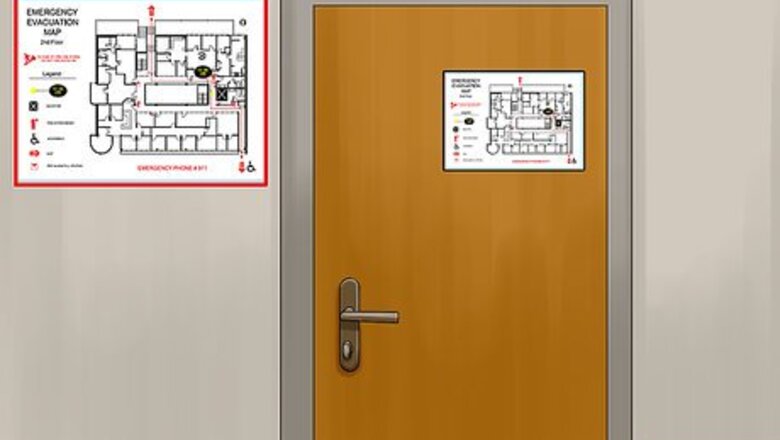
views
Planning an Evacuation Route
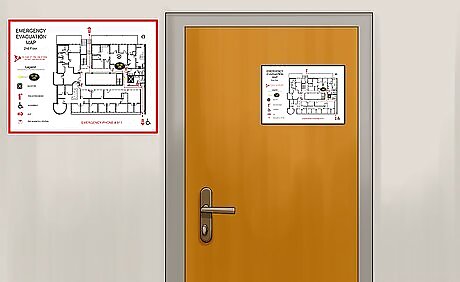
Check evacuation plans. Office buildings, hotels, restaurants, and other commercial spaces often have pre-established evacuations plans and procedures. Check with building management to find out about the evacuation protocol if you are in this type of building. Look for evacuation maps on building doors and in public areas such as lobbies and stairwells. If you are looking for evacuation plans for your office, check with your manager or the company head regarding current evacuation plans and what roles different people are to fill during an emergency.

Identify safe escape routes. Find routes that will get people out of the building with the least risk during an evacuation. Look at your building plans to help people find the exits nearest to them, and create an evacuation plan that takes people to their nearest exit quickly and safely. Try to avoid potential hazards such as going through kitchens or areas with large windows. These pose an excess risk as lines in kitchens can break and exacerbate emergencies while windows may blow out and cause increased risk due to glass. Be sure to avoid mechanical transportation such as elevators, as these could fail and put people at an increased risk. Use stairwells whenever possible.
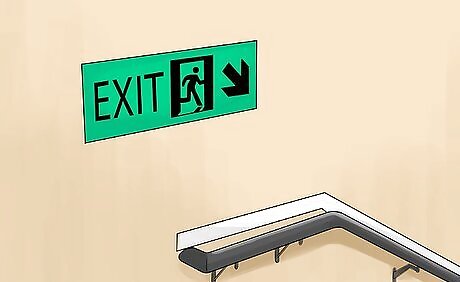
Mark your routes. Provide clear markers for people to guide people to exits from the building. Post evacuation maps throughout the building, and mark exits with clear “EXIT” signs. In spaces that do not get much natural light, such as interior hallways, you may also want to consider placing photoluminescent strips along the sides of the floors to help guide people to the nearest exit.
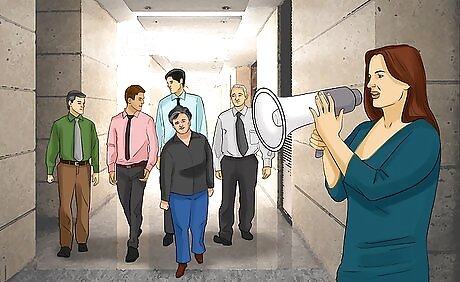
Inform others. Make sure other people using the building know about the evacuation plan. Help them identify their nearest exit and tell them about safety precautions such as avoiding elevators. It may also be helpful to appoint safety monitors to help guide others in the event of an evacuation if you are dealing with a large space that holds a great number of people.
Leaving the Building

Assess the situation. If possible, find out why you are evacuating before you leave the building. Knowing why an evacuation has been called can help you modify your plan if necessary to best accommodate the circumstances. If, for example, there is a fire that blocks your nearest exit, you know to go in the opposite direction of the fire, even if another exit is further away. If there is an active threat such as a bomb threat or an armed person spotted, seek instructions from authorities such as the police or fire department before attempting to evacuate.
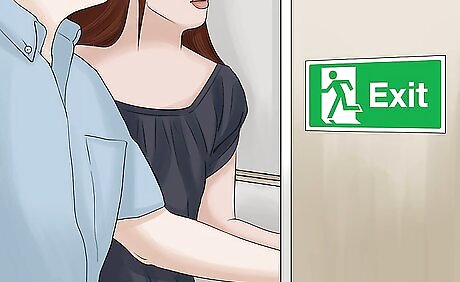
Proceed quickly to an exit. Once you know you are to evacuate, proceed quickly to your nearest exit. Do try to avoid panicking, as panic can quickly disorganize a group, slow down the evacuation process, and put more people in danger. Do not worry about gathering belongings that are not immediately within reach. Taking time to pack a bag or go to another room once an evacuation has been called is dangerous. Take only what is already on your person or already packed and within arm’s reach. If possible, exit through your nearest clearly marked exit sign. If a standard exit truly is not accessible, look for other ways out of the building such as through a window. Do not use the elevators. Elevators in evacuations are reserved for use by emergency personnel. Using elevators also puts your life at risk as the elevator may fall, stop, malfunction, or otherwise fail to work. If you have a disability that does not allow you to go down the stairs, call 911, report your location, and wait for emergency personnel at the designated Area of Rescue Assistance. Depending on the building, there may be evacuation chairs that can be deployed by wheelchair companions.

Get some distance. Once you have exited the space, make sure to put a safe distance between you and the building. Depending upon the situation, authorities may have set up a do not cross line to indicate a safe distance. Consider whether there is a designated meeting place outlined in your evacuation plan. If you are supposed to meet with others in a designated area, proceed directly to that area. Think about how much space is necessary for different types of emergencies. An emergency such as an electrical problem in the building likely requires less space than something like a fire. Consider how much space you need based on the reason for evacuation.
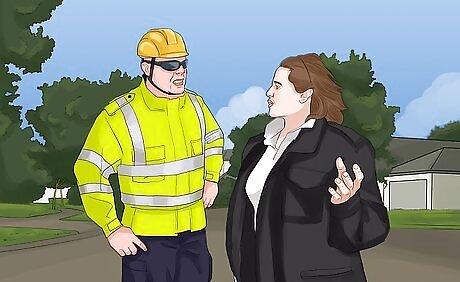
Check in with responders. Once you are a safe distance away from the building, check in with the authorities or emergency responders to let them know you're safe and see what your next steps need to be. This is also the time to let someone know if you have been injured during evacuation. If no authorities or first responders are present, call the police or fire department as appropriate to warn them of potential threats and receive further instruction.
Following Up After an Evacuation

Get clearance. Before you reenter the building, make sure you get clearance from emergency responders that the building is safe and whatever threat caused the evacuation has been contained. Do not reenter a building that has not been inspected by the proper authorities. If you were sent away after an evacuation, call to check in with the building manager or local authorities to make sure the space is safe to re-enter. Let them know, "We had to evacuate because of an emergency, and we would like to know if it is safe to reenter the space?" Additionally, it may be helpful to ask, "Are there any precautions we should take when going back into the space for the first time?"

Assess any damage. If physical damage was done to the space, take careful note of what damage occurred and what may be harmed or missing. Report any damage to the building manager, or to the authorities and your insurance if you own the building. In addition to noting damaged items, note anything that seems lost or stolen. Take photographs or videos of the damage as well as thorough notes in case it is necessary for you to file an insurance claim.
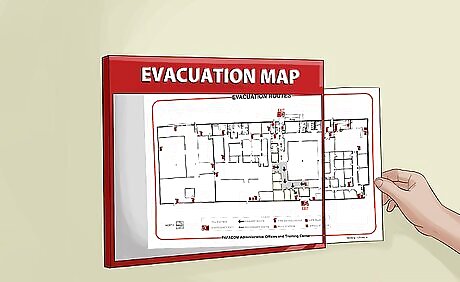
Update evacuation plans. Take this evacuation experience as an opportunity to work out kinks in your plan. Check with others if possible to see if there were obstacles or moments when the evacuation was slowed or stalled, and update your plan accordingly. If an evacuation was particularly slow, look for alternative routes or consider dividing people up more evenly among exits. Recap with the evacuated group to address any problems that you saw and suggest improvements for the future.




















Comments
0 comment